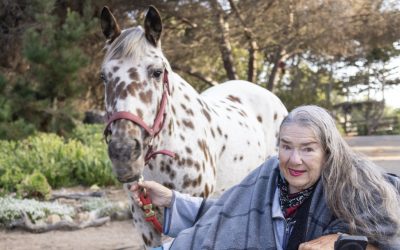Just where do you fit into your family tree? Genealogists relish tracing ancestry back through generations of lineage and the royal courts are sure to delineate to the most intricate of details. Any hereditary monarch must become so through ancestry. So, too, history has its own lineage as one event or person links to another in an unending array to the present day. Thus, the question of why (let alone how) San Luis Obispo transformed itself into the present from the past far exceeds any city or county boundaries. Indeed, the eventual community was conceived amid the imperial dictates and intrigues of the Spanish court in Madrid some 250 years ago.
Undoubtedly discouraged and exhausted, upon their return, the first Christmas by the Spaniards was celebrated near Cayucos/Morro Bay. The “gift” to all was surviving the trek.
The historical trail of our civic ancestry would fill volumes of details with the central coast part of a much larger drama that unfolds to this day and will continue as humanity has a knack of surviving its greatest successes and failures. Since there are rarely any coincidences, the purposeful evolution of state and local history begins as curiosity in the present links back into unrecorded time.
The intent here will be to provide a coherent and highly abbreviated account of adventures and misadventures in the earliest settlement efforts of our state and region. First, the goal primarily was to secure the vaguely explored territory from the perceived threats of Imperial Russia to next securing the land as a home for anticipated generations. The process has left some tangible evidence as mementos but the reality of understanding any day requires the reader to mentally travel back to times only vaguely possible to recreate an informed panorama of local history.
The intent here will be to provide a coherent and highly abbreviated account of adventures and misadventures in the earliest settlement efforts of our state and region. First, the goal primarily was to secure the vaguely explored territory from the perceived threats of Imperial Russia to next securing the land as a home for anticipated generations. The process has left some tangible evidence as mementos but the reality of understanding any day requires the reader to mentally travel back to times only vaguely possible to recreate an informed panorama of local history.
As to the beginnings of colonization, about 300 men responded to orders generated from the Spanish court in Madrid and the viceroyalty of New Spain ruled from Mexico City. Worthy of further exploration, it is doubtful anyone on the Monterey Expedition was particularly curious about their orders. In the eighteenth century Spanish Empire, the primary obligation was obedience without question followed closely by completion of orders. Contrary to much popular history, the Crown’s objective was to further secure the territory within its empire. Today’s popular missions were an adjunct to the civic imperative.
Here’s the story.
The Spaniard’s arrival in San Diego in the spring and summer of 1769 was an ominous sign of things to come. Indeed, the explorers had little to base their adventures on as maps and orders were formed from records 167 years old. It was on November 10, 1602, when Sebastian Vizcaíno entered and renamed the bay. He, in turn, was relying on documents provided by Juan Rodriguez Cabrillo some 60 years earlier who had named the harbor San Miguel. The Spaniards kept records of explorations as national treasures.
The accounts could have languished in governmental files if Joseph Bernardo Galvez Gallardo (see Journal Plus magazine: March and April 2016) had not received orders from the Crown to secure the unexplored northern territory. A consummate bureaucrat, impulsive, sometimes delusional, Galvez organized the exploration by land and sea. Ill-equipped for the undertaking, both the Argonauts and land parties depended on their grit and God for a safe journey. Many, if not most, never returned home.
Here’s the story.
The Spaniard’s arrival in San Diego in the spring and summer of 1769 was an ominous sign of things to come. Indeed, the explorers had little to base their adventures on as maps and orders were formed from records 167 years old. It was on November 10, 1602, when Sebastian Vizcaíno entered and renamed the bay. He, in turn, was relying on documents provided by Juan Rodriguez Cabrillo some 60 years earlier who had named the harbor San Miguel. The Spaniards kept records of explorations as national treasures.
The accounts could have languished in governmental files if Joseph Bernardo Galvez Gallardo (see Journal Plus magazine: March and April 2016) had not received orders from the Crown to secure the unexplored northern territory. A consummate bureaucrat, impulsive, sometimes delusional, Galvez organized the exploration by land and sea. Ill-equipped for the undertaking, both the Argonauts and land parties depended on their grit and God for a safe journey. Many, if not most, never returned home.
For the Monterey Expedition, San Diego provided some rest but also prolonged the grueling journey begun months before in the wilds and along the shores of Baja California. With a ship lost at sea, deaths from scurvy rampant, misery a daily companion and natives—at first curious —becoming more brazen and then hostile, the only reasonable option would have been to retreat. It, indeed, became part of the plan for survival. In an episode of high drama, the return of a long overdue supply ship saved the expedition from failure.
Only the determination and duty of the soldiers led by Captain Gaspar de Portola (1716-1786) and the faith of the five Franciscan friars remained strong. Strangers in a strange land, survival became increasingly perilous for the pioneers but duty also demanded a “Presidio.”
On July 1, 1769, along with a religious ceremony, Portola claimed the territory for Spain and the beachhead on the bay became the first European settlement on the Pacific coast. Fortifications at first were a rudimentary stronghold with Adobe being introduced a decade later. More than a military base, the Presidio served the government throughout most of the Mexican era (1821-1846). Since Portola’s orders were to find and fortify Monterey, he gathered the least afflicted men and left on the 14th on the first (and fruitless) journey along the coast.
In the meanwhile, a more celebrated event finds Fray Junipero Serra dedicating the first of nine mission sites founded in his lifetime (1713-1784) on July 16. The original site was abandoned in 1774 for its present location some six miles east. Indeed, all four missions preceding the one locally moved from their original locations.
The Mission San Diego de Alcala (St. James of Alcala [Spain]) was to be the first of three missions ordered by Galvez. The next ordered would be in Monterey and a third somewhere in between. His orders were followed as to the first two.
The Portola Expeditions are heavily documented with the most complete record composed by the chaplain and chronicler, Friar Juan Crespi. Meticulously rendered in Alan Brown’s A Remembrance of Distant Roads, the hefty volume (850 pages) is a daily record of the arduous journey. Locally, the party passed through along the coast in early September. However, the first record of the name San Luis Obispo was near Santa Barbara on August 19, the saint’s feast day. Little did anyone know the fifth mission would be named after the young saint three years later followed ninety years later by a county and town. While the saint’s remains are in Toulouse, France, his name is used only here in the secular world.
Undoubtedly discouraged and exhausted, upon their return, the first Christmas by the Spaniards was celebrated near Cayucos/Morro Bay. The “gift” to all was surviving the trek.
On July 1, 1769, along with a religious ceremony, Portola claimed the territory for Spain and the beachhead on the bay became the first European settlement on the Pacific coast. Fortifications at first were a rudimentary stronghold with Adobe being introduced a decade later. More than a military base, the Presidio served the government throughout most of the Mexican era (1821-1846). Since Portola’s orders were to find and fortify Monterey, he gathered the least afflicted men and left on the 14th on the first (and fruitless) journey along the coast.
In the meanwhile, a more celebrated event finds Fray Junipero Serra dedicating the first of nine mission sites founded in his lifetime (1713-1784) on July 16. The original site was abandoned in 1774 for its present location some six miles east. Indeed, all four missions preceding the one locally moved from their original locations.
The Mission San Diego de Alcala (St. James of Alcala [Spain]) was to be the first of three missions ordered by Galvez. The next ordered would be in Monterey and a third somewhere in between. His orders were followed as to the first two.
The Portola Expeditions are heavily documented with the most complete record composed by the chaplain and chronicler, Friar Juan Crespi. Meticulously rendered in Alan Brown’s A Remembrance of Distant Roads, the hefty volume (850 pages) is a daily record of the arduous journey. Locally, the party passed through along the coast in early September. However, the first record of the name San Luis Obispo was near Santa Barbara on August 19, the saint’s feast day. Little did anyone know the fifth mission would be named after the young saint three years later followed ninety years later by a county and town. While the saint’s remains are in Toulouse, France, his name is used only here in the secular world.
Undoubtedly discouraged and exhausted, upon their return, the first Christmas by the Spaniards was celebrated near Cayucos/Morro Bay. The “gift” to all was surviving the trek.
Amid the struggles, hunger and illness of the unsuccessful adventure, the party failed to recognize the roadstead of Monterey but unknowingly encountered the southern edge of the future named San Francisco Bay. Returning to San Diego by late January, fortified with some fresh supplies, the decision was to try again to find the elusive bay.
This time, the effort was rewarded.




